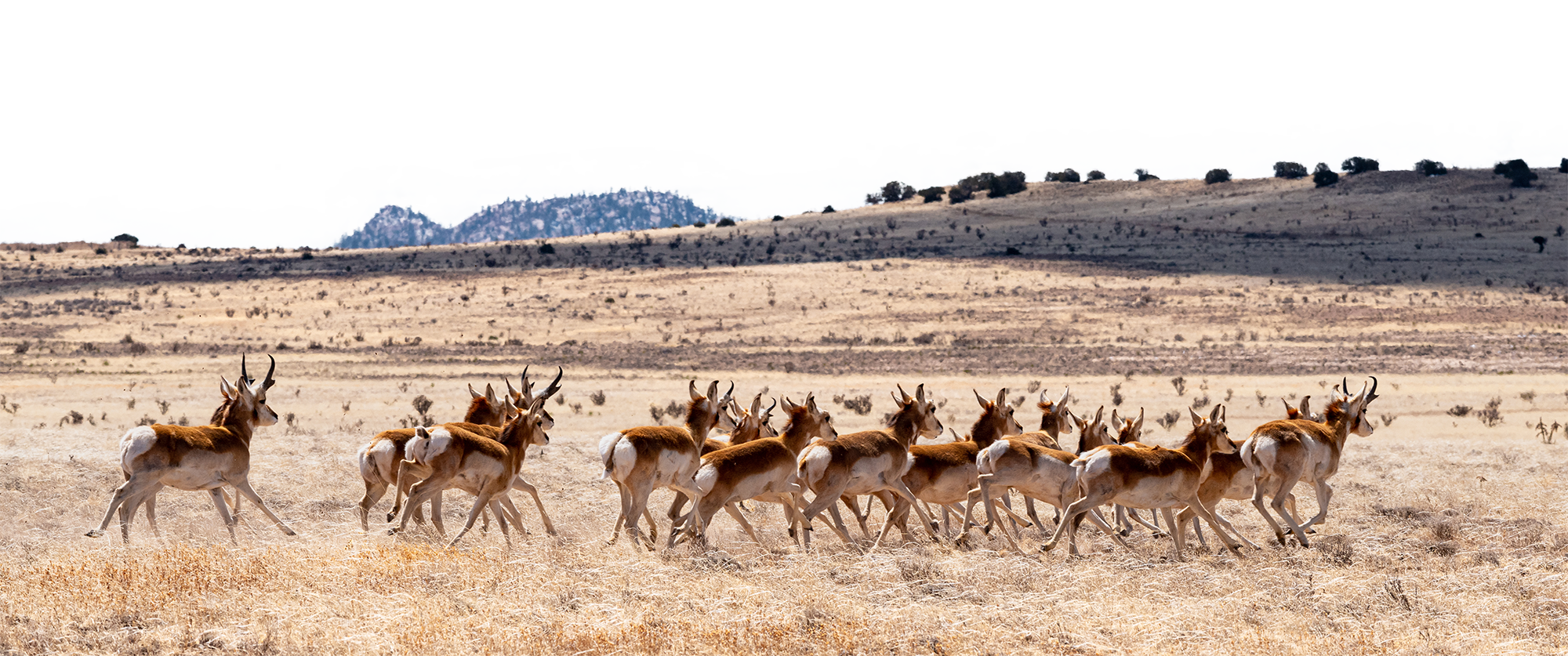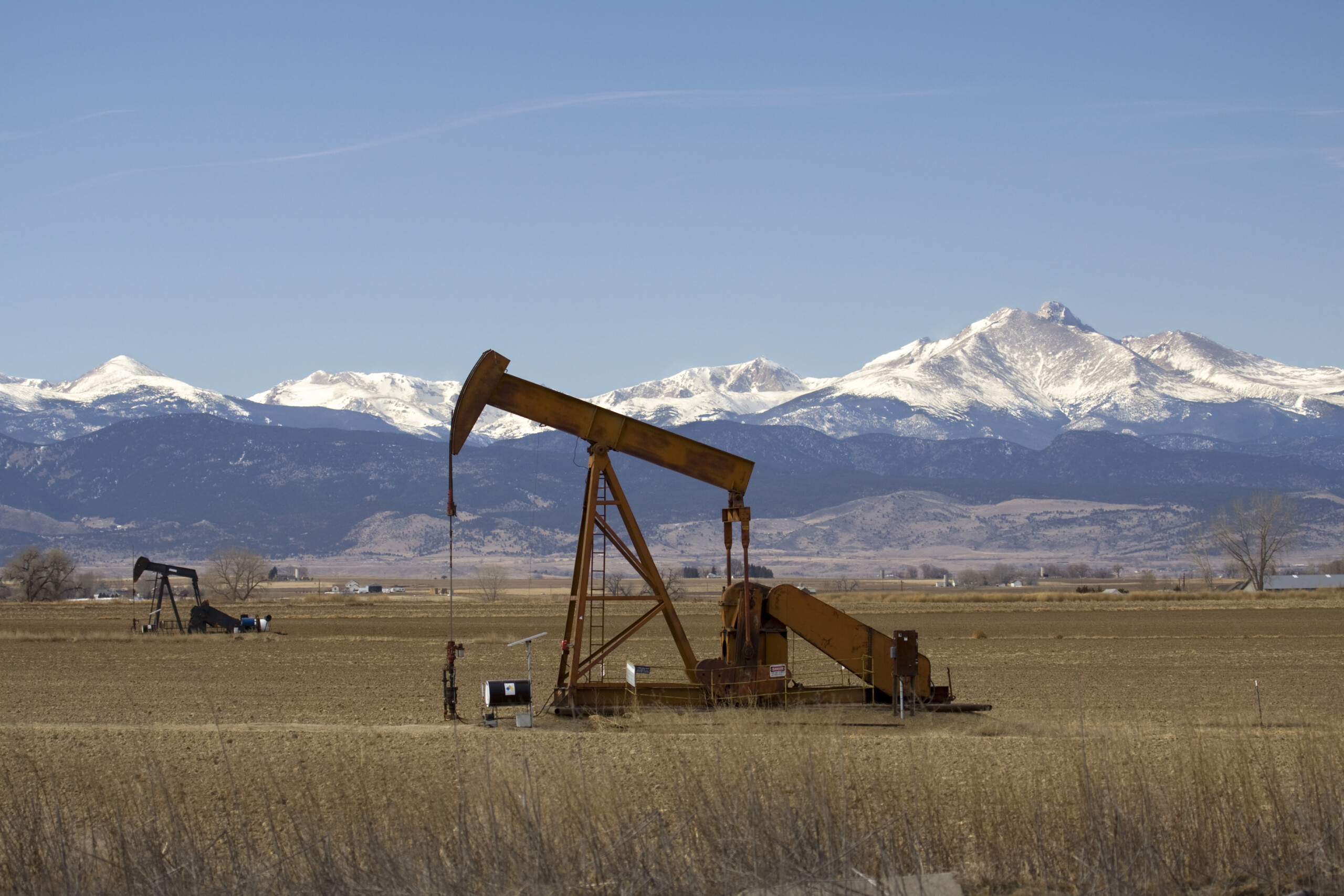Annual Report 2024
In 2022, the Calf Canyon/Hermits Peak Fire burned over 340,000 acres in the Sangre de Cristo Mountains, showing just how vulnerable New Mexico’s lands have become. This disastrous blaze — the largest in the state’s history — devastated forests, watersheds, and wildlife habitat.
Climate change is intensifying droughts and wildfires, and new development is chipping away at wild spaces across the West. But until recently, state agencies in New Mexico relied on sporadic or one-time appropriations to protect natural landscapes and cultural heritage sites. Gaps in funding, sometimes lasting years, caused the state to miss out on federal grants that required matching funds.
In 2023, after years of advocacy and coalition building championed by WRA, New Mexico established the Land of Enchantment Legacy Fund, its first permanent and dedicated source of conservation funding. This $100 million investment was a critical first step, but WRA knew it fell short of providing the long-term resources needed to meet growing and complex conservation needs across the state.
In 2024, New Mexico expanded its commitment with a historic $300 million investment to the Land of Enchantment Legacy Fund.
The funding will support broad conservation efforts in all 33 counties and Tribal communities across the state, providing a lifeline for land and water conservation, and outdoor equity initiatives.
WRA built a diverse coalition of organizations that worked closely with the governor’s office and state agencies to develop the legislation.
The Legacy Fund strengthens programs that protect New Mexico’s natural and cultural resources. This includes efforts to conserve land and water, restore forests and watersheds, improve outdoor recreation opportunities, support agriculture and working lands, preserve historic sites, and protect wildlife. Additionally, the fund will boost New Mexico’s growing $3.2 billion outdoor industry by creating jobs, expanding access to outdoor recreation, and supporting rural and agricultural communities. The funding also opens the door for state agencies to apply for federal grants, with every $1 from the Legacy Fund potentially attracting $3 to $4 in additional funding.
Later this year, the Legacy Fund will begin distributing $12.5 million annually to existing state conservation programs, supporting initiatives like forest health, outdoor recreation infrastructure, and water conservation. These investments will protect the people, wildlife, economy, and cultural heritage of New Mexico.

When it comes to conservation funding mechanisms like the Land of Enchantment Legacy Fund, New Mexico’s northern neighbor faces a strikingly different reality.
Nearly one-third of Colorado’s lands have already been altered by human development and only 10% of its lands are permanently protected.
Research conducted by The Nature Conservancy shows that 51% — 33.9 million acres — of Colorado’s highly valuable land base is still intact — natural areas that are essential to wildlife and biodiversity in a changing climate. Of these remaining highly valuable lands, 8.75 million acres — approximately 13% of the state — are both under threat by new development and completely unprotected.
WRA knows one of the most effective ways to fight climate change and safeguard wildlife and biodiversity is to enact policies and secure funding that protect high-value, at-risk lands from development like oil and gas production and urban sprawl. Without sufficient policies and funding sources, Colorado’s natural spaces will continue to rapidly shrink.
The negative impacts of oil and gas development include greenhouse gas emissions, pollutants that cause poor air quality, and the destruction and disturbance of natural areas and wildlife. Colorado incurs significant costs addressing these adverse and long-lasting impacts. Holding oil and gas companies financially accountable for the damage they cause reinforces the principle that those who are responsible for the harm to the environment should also fund its restoration.
WRA was the driving force behind drafting and advocating for legislation that created a fee on oil and gas production in the state in 2024. The bill will take effect in the summer of 2025 and is expected to generate as much as $50 million annually for Colorado Parks and Wildlife.
This revenue will allow the state to partially remediate the environmental harm caused by oil and gas production by making landmark investments in conservation. Funds will be used to create new state parks and wildlife areas, slow biodiversity loss and improve ecosystem resilience, improve wildlife connectivity and migration corridors, and restore lands to compensate for those lost to oil and gas development

While only 10% of Colorado’s lands are permanently protected from development like oil and gas, 33.9 million acres of the state’s highly valuable land base are still intact.
Across the West, land conservation depends on funding. New Mexico’s Land of Enchantment Legacy Fund is a forward-thinking investment that will help ensure that irreplaceable land and water resources are protected. This landmark win shows what’s possible when strategic advocacy, political will, and diverse coalitions come together to prioritize natural and cultural treasures. By holding oil and gas companies accountable, Colorado took a critical step toward securing lasting conservation funding, but its land remains exposed to development and the impacts of climate change.
The solution is clear: secure conservation funding before it’s too late.
We know what’s at stake, and we’re not stopping with these recent achievements. WRA is committed to protecting the landscapes and wildlife habitat that define the West. Together, with state decision makers, local leaders, and supporters like you, we can ensure a future where these natural spaces endure for generations to come.






